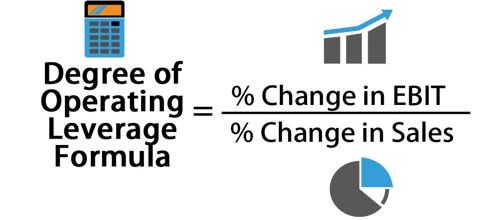
It is used to evaluate a business’ breakeven point—which is where sales are high enough to pay for all costs, and the profit is zero. A company with high operating leverage has a large proportion of fixed costs—which means that a big increase in sales can lead to outsized changes in profits. A company with low operating leverage has a large proportion of variable costs—which means that it earns a smaller profit on each sale, but does not have to increase sales as much to cover its lower fixed costs.
Formula 2
In simpler terms, it tells you how sensitive your operating income (or EBIT—Earnings Before Interest and Taxes) is to changes in sales. The more operating leverage a company has, the more its profits will rise (or fall) with changes in sales volume. Use this calculator to easily determine the Degree of Operating Leverage (DOL) for your business. Simply input the values for sales, fixed costs, and variable costs to get the result.
What Is a Good Operating Leverage Ratio?
It essentially highlights the sensitivity of a company’s earnings before interest and taxes (EBIT) to changes in its sales volume. The DOL measures the how sensitive operating income (or EBIT) is to a change in sales revenue. Degree of combined leverage measures a company’s sensitivity of net income to sales changes. Financial leverage is a measure of how much a company has borrowed in relation to its equity.
- Understanding DOL is vital for companies to assess the risk and potential profit changes due to sales volatility.
- It is important to understand the concept of the DOL formula because it helps a company appreciate the effects of operating leverage on the probable earnings of the company.
- It provides insight into the relationship between fixed and variable costs and their impact on profitability.
- It is particularly useful for gauging the potential impact of cost changes on the company’s profitability.
- Once obtained, the way to interpret it is by finding out how many times EBIT will be higher or lower as sales will increase or decrease respectively.
Enhance Financial Planning Strategies

Therefore, the company can make changes to increase operating profits accordingly. It is important to understand the concept of the DOL formula because it helps a company appreciate the effects of operating leverage on the probable earnings of the company. It is a key ratio for a company to determine a suitable level of operating leverage to secure the maximum benefit out of a company’s operating income. The degree of operating leverage calculator shows the effect on operating income of the cost structure of a business. The DOL is calculated by dividing the contribution margin by the operating margin. For example, the DOL in Year 2 comes out 2.3x after dividing 22.5% (the change in operating income from Year 1 to Year 2) by 10.0% (the change in revenue from Year 1 to Year 2).
Despite the significant drop-off in the number of units sold (10mm to 5mm) and the coinciding decrease in revenue, the company likely had few levers to pull to limit the damage to its margins. As a company generates revenue, operating leverage is among the most influential factors that determine how much of that incremental revenue actually trickles down to operating income (i.e. profit). This calculator simplifies the DOL calculation, facilitating a better understanding of financial leverage and operational efficiency for businesses, financial analysts, and students. High operating leverage means that small changes in sales can lead to significant changes in operating income. This can be beneficial when sales are increasing but risky when sales are declining. If you try different combinations of EBIT values and sales on our smart degree of operating leverage calculator, you will find out that several messages are displayed.
A company with a high DOL can see huge changes in profits with a relatively smaller change in sales. If you’re still having problems calculating the DOL of your business, you can always use our degree of operating leverage calculator and other helpful tools on CalcoPolis. The higher the degree of operating leverage, the greater the potential danger from forecasting risk, in which a relatively small error in forecasting sales can be magnified into large errors in cash flow projections. On the contrary, companies having low operating leverage may find it effortless to earn a profit when trading with lower sales. A lower DOL indicates that your profits are less sensitive to sales changes, allowing for more flexibility in pricing and promotions.
In practice, the formula most often used to calculate operating leverage tends to be dividing the change in operating income by the change in revenue. Understanding DOL is vital for companies to assess the risk and potential profit changes due to sales volatility. It’s especially crucial for strategic planning, risk management, and financial forecasting. A higher DOL indicates a higher risk but also a higher potential for profit growth with increased sales. This section will use the financial data from a real company and put it into our return on common stockholders’ equity ratio explanation formula example and interpretation.
In year one, the operating expenses stood at $450,000, while in year two, the same went up to $550,000. Finally the calculator uses the formulas above to calculate the DOL and the operating leverage for each business. Regardless of whether revenue increases or decreases, the margins of the company tend to stay within the same range. If sales and customer demand turned out lower than anticipated, a high DOL company could end up in financial ruin over the long run.
It is therefore important to consider both DOL and financial leverage when assessing a company’s risk. For instance, a 10% increase in sales for a company with low DOL might result in a less than 10% increase in EBIT, indicating a more stable, albeit less responsive, profit scenario. This means a 10% increase in sales would lead to a 26.7% increase in operating income.